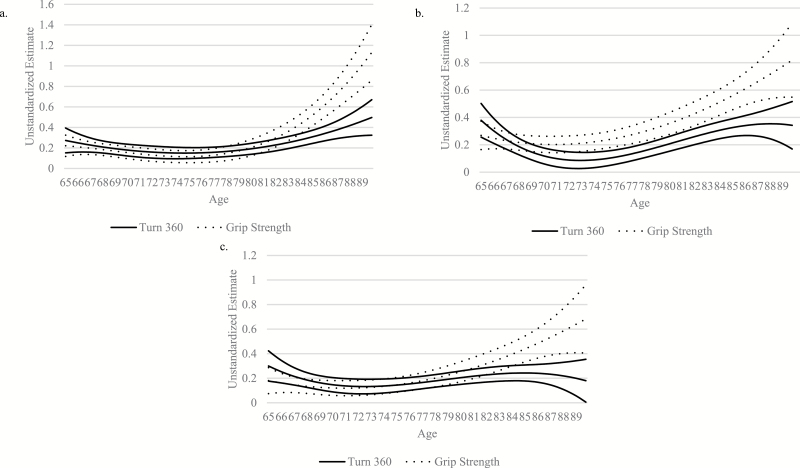Figure 3.
Turn 360 and grip strength model comparison for (a) memory, (b) processing speed/attention, and (c) reasoning. Note: Models were adjusted for sex, race, education, and self-rated health. The solid line was the coefficient estimate and 95% confidence band for Turn 360, while the dotted line was the coefficient estimate and 95% confidence band for grip strength. Higher coefficient scores indicated a higher relationship magnitude. A coefficient band intersecting 0.0 indicated a nonsignificant (p > .05) relationship. When the coefficient curves of one physical function measure overlapped the coefficient curves of the other physical function measure, this indicated both measures had similar estimates for the corresponding age. Turn 360 and grip strength similarly predicted memory until age 85, at which point grip strength was a significantly better predictor. Turn 360 and grip strength similarly predicted processing speed/attention performance until 73, at which point grip strength was a marginally better predictor. Turn 360 and grip strength similarly predicted reasoning performance until 85, at which point grip strength was a significantly better predictor.

